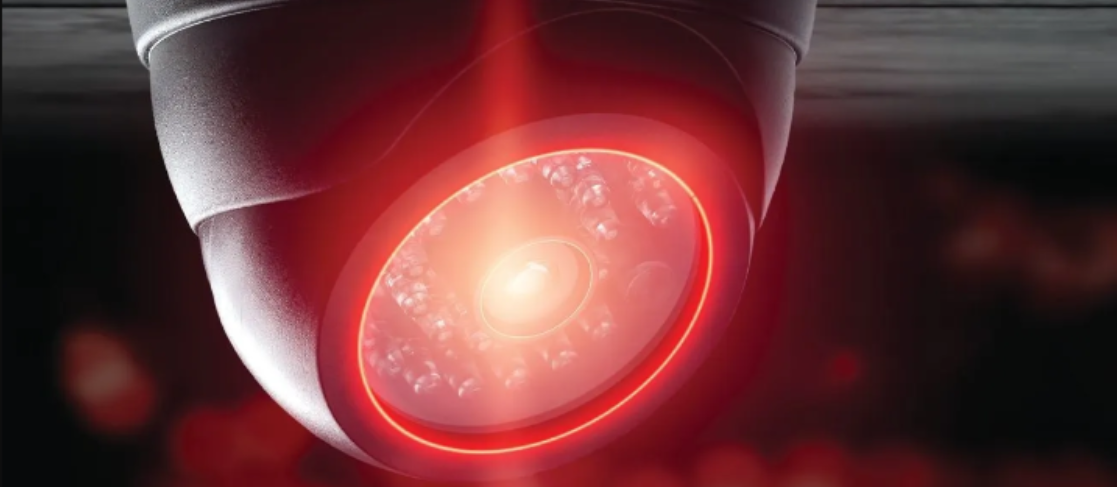Breathing Life into Workplaces
Enhanced IAQ management

While people do not often think about the air they breathe, indoor air quality (IAQ) dictates the ability to create healthy, thriving workplaces. In environments where many people spend 40-plus hours every week, poor IAQ can lead to respiratory issues and allergies, exacerbate conditions such as asthma, impair cognitive function and even lead to long-term health challenges. Sick-building syndrome exists for a reason.
Numerous scientific studies link air pollution and specific pollutants to a range of health problems and environmental impacts. Depending on the contaminant, older adults, children, and those with heart and respiratory diseases are at greater risk for experiencing air pollution-related health effects.
The COVID-19 pandemic emphasized the significance of better ventilation and air filtration as awareness about the air in enclosed spaces heightened. Airborne transmission of diseases propelled IAQ to the forefront of discussions on workplace safety. In this modern, post-pandemic reality, IAQ management is more important than ever, especially in bolstering the confidence of employees hesitant about returning to in-person work. With the rise of hybrid work, offices now have more flexible usage patterns, so demand-controlled ventilation that adjusts to occupancy levels is also critical.
But IAQ management is not just about reacting to crises — it involves proactively creating resilient, healthy and productive workspaces. Advanced IAQ management systems provide a breath of fresh air for the future of facility management.
Beyond rising health and safety concerns and poor IAQ's detrimental impact on employee productivity and well-being, enhanced IAQ management systems — elevated by artificial intelligence and photoelectrochemical oxidation — can help FMs avoid potential legal issues, minimize energy consumption, and attract and retain quality tenants.
The devastating impact of unhealthy indoor air
IAQ can be defined as the condition of the air within and around the enclosed spaces and structures where people work, learn and live. Influenced by numerous factors, including the presence of pollutants, humidity levels, temperature and ventilation, IAQ plays an outsized role in determining the health and comfort of occupants.
As people constantly move in and out of facilities, the steady ebb and flow increases the risk of outdoor air and pollutants entering and contaminating indoor air. In most facilities, outdoor air infiltrates buildings through openings, joints and cracks in walls, floors and ceilings, as well as around windows and doors. Outdoor climate and weather conditions can also affect IAQ. Consider whether building occupants keep windows open or closed and whether they operate air conditioners, humidifiers or heaters. When little infiltration and natural or mechanical ventilation exist, the air exchange rate is low, and pollutant levels can increase.
Airborne pollutants, often invisible to the naked eye, pose various health and operational risks. Consequently, understanding and controlling the following common pollutants can help reduce the risk of indoor health concerns.
-
Bacteria, viruses and allergens: Microscopic organisms released when an infected person coughs, sneezes, breathes or speaks, and allergens like pet dander or dust mites can circulate within the air in closed spaces, potentially leading to illnesses and allergies.
-
Particulate matter: Particulate matter like PM2.5 and PM10 from vehicles, power plants or wildfires infiltrates buildings through ventilation systems, open doors/windows or cracks/gaps in the building envelope. In offices, equipment like printers, copiers and paper shredders can emit particulates like paper dust or toner, compromising air quality and respiratory health.
-
Volatile organic compounds: VOCs are common indoor air contaminants from various sources such as building materials, furnishings and cleaning products. VOC accumulation due to inadequate ventilation and off-gassing from interior furnishings and products contributes to poor IAQ.
-
Mold and mildew: Excess moisture and damp indoor environments create breeding grounds for mold and mildew. Whether the result of flooding, leaks, condensation on cold surfaces, poor drainage in HVAC systems, wet building materials or spores entering from outside, inhaling mold spores or the mycotoxins they produce can lead to allergic reactions and respiratory issues.
-
Carbon dioxide: While CO2 is not directly harmful at typical indoor levels, elevated levels of the gas indicate insufficient ventilation. Poor air provision and circulation in a room or building can lead to discomfort, drowsiness and decreased cognitive function.
-
Pollen: Allergenic pollen from the outdoors can infiltrate and contaminate indoor spaces via open doors/windows, people bringing it in, and gaps in walls, floors, roofs and other openings, often prompting allergic and asthmatic reactions by sensitive occupants.
-
Wildfire smoke: As changing climate contributes to more (and more extreme) weather events, smoke particles from nearby or distant wildfires will increasingly enter indoor spaces. The fine particulate matter in wildfire smoke can irritate the eyes and airways, cause headaches and exacerbate respiratory problems when inhaled.
-
Ozone: Ground-level ozone can enter indoor spaces and not only react with surfaces and furnishings, degrading them over time, but also cause respiratory irritation and lung function impairment and exacerbate asthma, bronchitis, emphysema and other lung diseases.
While the importance of any individual pollutant depends on its volume emitted and how hazardous those emissions are, inadequate ventilation can increase indoor pollutant levels. Poor ventilation does not bring in enough outdoor air to dilute emissions from indoor sources or carry indoor air pollutants out of an area, which causes indoor pollution.
Unfortunately, the consequences of indoor pollutants, inadequate ventilation and poor IAQ extend beyond immediate discomfort. Compromised air quality can also force a facility’s occupants to experience:
-
Allergies
-
Concentration troubles
-
Decreased cognitive function
-
Dizziness
-
Fatigue
-
Headaches
-
Irritation of the eyes, nose, throat and lungs
-
Long-term health risks, such as respiratory diseases, heart disease and cancer
-
Poor sleep quality
-
Respiratory issues
-
Slower response times
-
Worse asthma symptoms
Poor IAQ’s economic toll
Unhealthy IAQ is not just a matter of discomfort and health. Poor IAQ management bears a significant financial burden. The World Bank estimates the global cost of health damages associated with exposure to air pollution is US$8.1 trillion, about 6 percent of global gross domestic product.
Globally, the economic toll of sick-building syndrome is substantial; and in the United States alone, it is estimated to cost between US$10 billion and $70 billion annually due to medical expenses, reduced productivity and absenteeism. According to the Global Asthma Report, respiratory disease attributed to dampness and mold exposure accounts for billions of dollars annually in Australia, the EU, the U.K. and the U.S.
In a recent Harvard University study, researchers analyzed workers in offices across six countries, assessing their concentration and cognitive ability using various environmental scenarios and altering indoor air quality in a controlled lab setting. The study found employees across engineering, real estate investment, architecture and technology responded slower and less accurately on a series of cognitive tests in indoor environments with increased concentrations of fine particulate matter and lower ventilation rates.
At the highest ventilation rate for the study, closed-environment participant tests showed an 8 percent increase in productivity over participants who did not benefit from improved IAQ conditions. This percent increase was quantified as a US$6,500 boost in productivity per employee.
Countless studies globally exhibit the exorbitant costs of poor IAQ — in the trillions of dollars annually — while improving it can yield tremendous economic benefits and savings. Given the undeniable connection between IAQ and employee health and productivity, FMs demand innovative IAQ solutions that help ensure pristine air quality.
Harnessing advances in AI and PECO to improve IAQ
To effectively manage and enhance IAQ, FMs and organizations must embrace innovative solutions that tackle the intricate challenges facilities and building portfolios pose.
As technologies advance, decision makers recognize that traditional approaches alone are no longer sufficient to ensure the well-being and productivity of occupants — they need cutting-edge IAQ management systems. Device integration, artificial intelligence and photoelectrochemical oxidation are three advances driving IAQ management forward.
Modern IAQ solutions seamlessly integrate different air purification devices, software, and weather and environmental forecasts to enable comprehensive control. This level of integration empowers FMs with enterprise-wide monitoring and control across thousands of connected devices — all from a single location, across multiple facilities, branches, campuses and cities — simplifying the management process for large and diverse building portfolios.
By harnessing the power of AI and machine learning algorithms, IAQ management systems continuously analyze data from sensors and devices to drive real-time decision making around IAQ optimization. This dynamic, AI-driven visibility ensures that IAQ management efforts are responsive and effective, adjusting to fluctuating conditions and occupant needs.
Today’s most advanced air purification devices combine HEPA (high-efficiency particulate air) filtration with photoelectrochemical oxidation technology to transform the IAQ management landscape. HEPA filters can remove 99.97 percent of dust, pollen, mold, bacteria and any airborne particles with a size of 0.3 microns, but trapping harmful particles is no longer sufficient. Photoelectrochemical oxidation (PECO) technology takes air purification a step further by breaking down the bonds in pollutants through a light-activated chemical reaction on the surface of the filter. The PECO process effectively destroys airborne pollutants by transforming them into harmless compounds like oxygen and water vapor.
Three recent studies — from Florida International University (FIU), Mercy Health and the University of South Florida (USF), and the University of Nebraska Medical Center — demonstrate that PECO technology can safely destroy various indoor air pollutants. The FIU preclinical study assessed the differences in how air cleaned by a PECO-enhanced device affects allergic reactions compared to HEPA filtration alone, revealing a four-fold increase in the allergic response in control groups compared to PECO and HEPA groups. The Mercy Health-USF and University of Nebraska Medical Center studies measured the efficacy of PECO-powered air purification on COVID-19 patient recovery and assessed the impact of coronavirus coming into contact with a PECO-enhanced device, respectively. The research demonstrated that in-room devices with PECO technology could help reduce the length of hospital stays by approximately two days and that the virus that causes COVID-19 oxidizes onto PECO filters, leaving no trace of its presence.
The multifaceted benefits of better IAQ management
Of course, innovative IAQ management systems can transform building portfolios, creating safer, healthier environments for all occupants. Beyond that, however, better IAQ management can decrease employee sick days, contributing to higher productivity and lower operational costs. Plus, occupants might experience heightened cognitive function in healthier environments, leading to improved work performance.
Facility-wide commitment to IAQ demonstrates a dedication to tenant well-being, enhancing employee morale and instilling confidence among the workforce. In a competitive marketplace, the ability to offer tenants a healthier workspace can attract top companies and contribute to long-term retention.
Today, adherence to health guidelines is crucial. Compliance is essential for FMs to provide healthy IAQ. Innovative IAQ management systems ensure compliance with recommendations from government and industry organizations.
The Centers for Disease Control and Prevention (CDC) recommends improving ventilation, filtration and air cleaning strategies, including increasing outdoor air ventilation and using filters and portable air cleaners. Guidance from the U.S. Environmental Protection Agency (EPA) advises reducing sources of VOCs and using air filtration. In addition to following ASHRAE standards 62.1 and 62.2 for ventilation rates and outdoor air exchange, today’s IAQ management systems must follow the newly published ASHRAE Standard 241, establishing minimum requirements to reduce the risk of airborne disease transmission, such as SARS-CoV-2 virus, which causes COVID-19, the flu virus and other pathogens in buildings like single and multifamily homes, offices, schools and health care facilities. Certifications like LEED (Leadership in Energy and Environmental Design) and WELL emphasize IAQ best practices for new construction and renovations beyond just code minimums as well.
Considering IAQ management’s profound impact on employee well-being and productivity and the myriad benefits it unlocks, the path to a better workplace begins with embracing these IAQ management innovations.
IAQ management for the workplace of tomorrow
IAQ management systems are vital for healthier, more productive workplaces. Air is intricately linked to health, productivity and overall quality of life. Poor IAQ not only leads to increased employee sick days but also hampers cognitive function, disrupts sleep patterns and creates long-term health risks.
In the future workplace, employees can breathe easy, both figuratively and literally. Embracing innovations in IAQ, exemplified by innovative technologies like AI and PECO, opens the door to this promising reality. With AI, we can proactively manage IAQ, whereas PECO technology helps eradicate harmful indoor pollutants.
Embracing these innovations empowers FM and organizations to demonstrate their commitment to the safety and comfort of their occupants, ushering in a brighter, more prosperous workplace of tomorrow.

Read more on Operations & Maintenance , Occupancy & Human Factors and Risk Management
Explore All FMJ Topics









